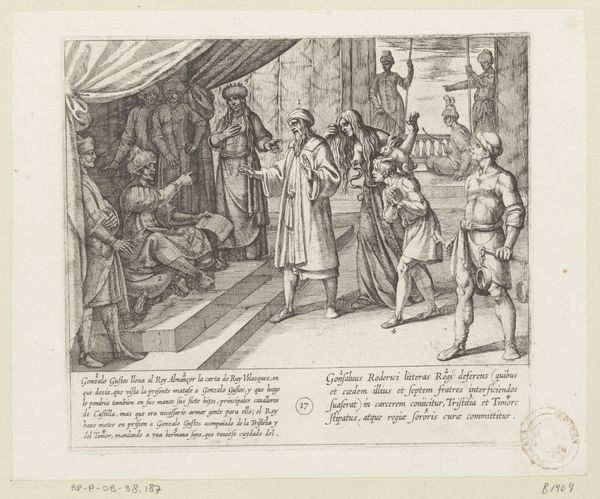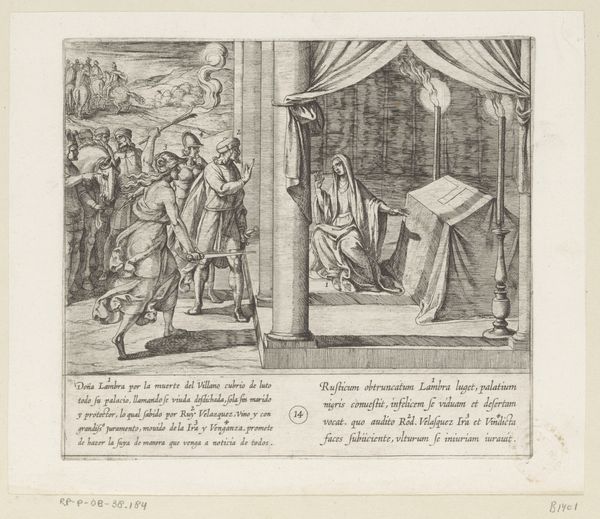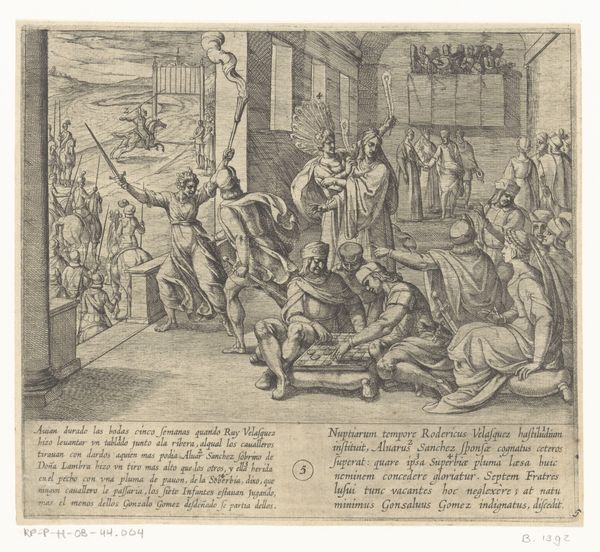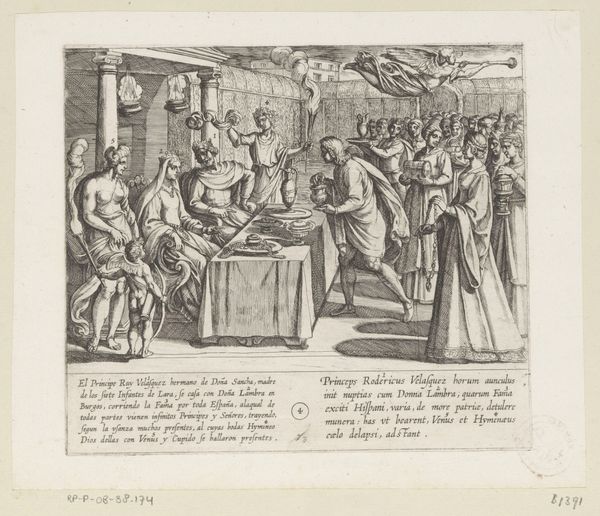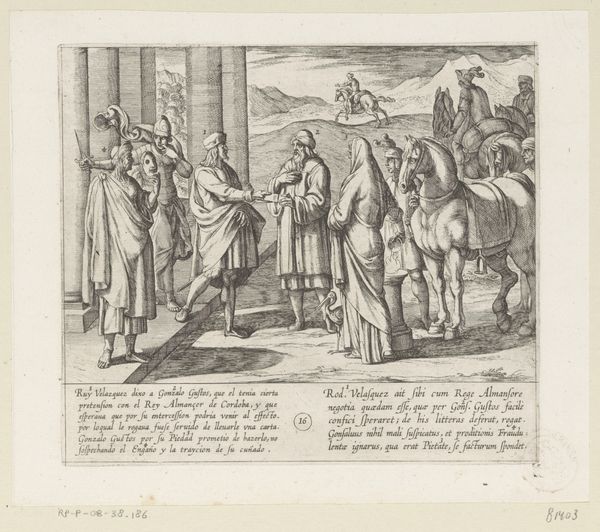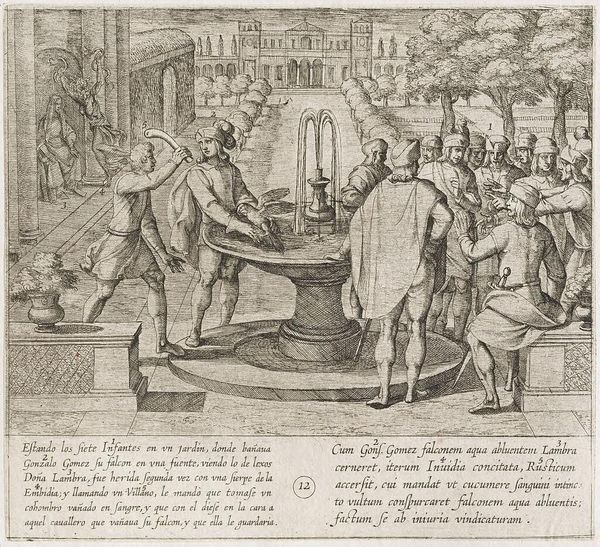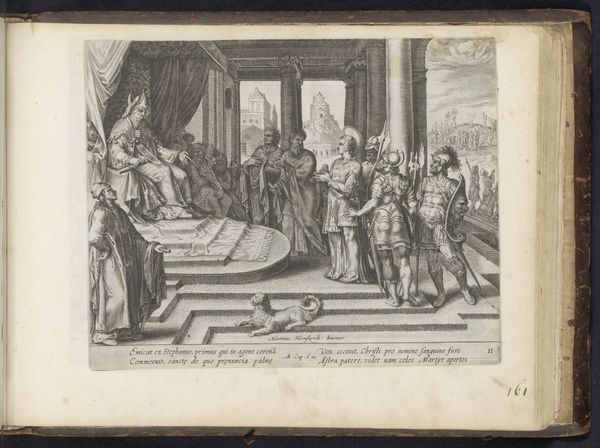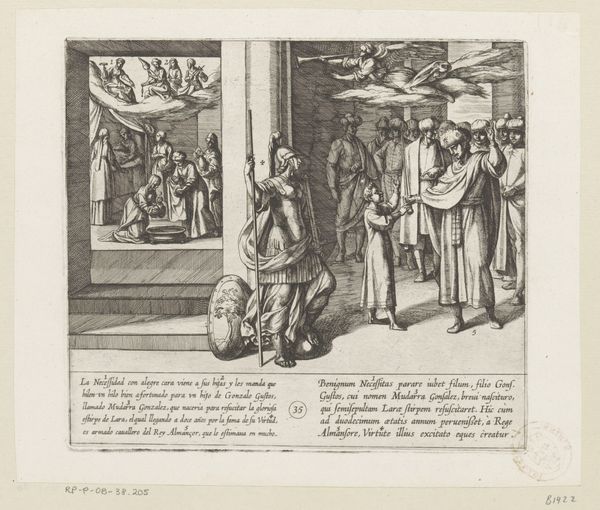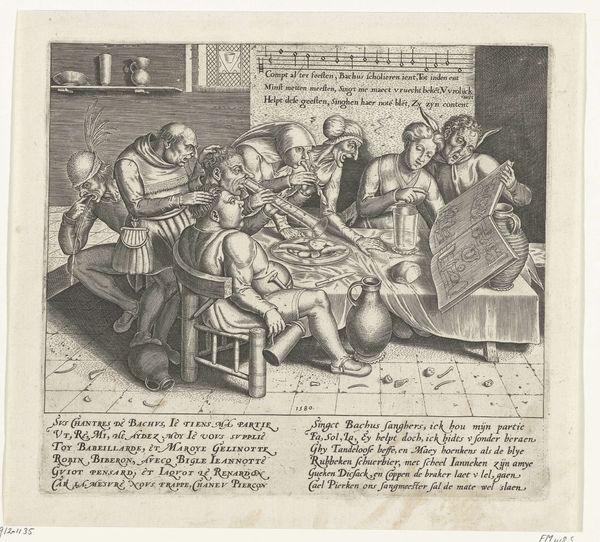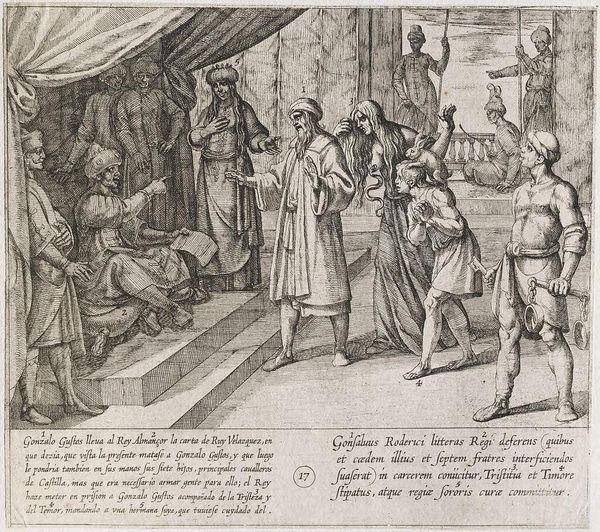
Almanzor beveelt zijn troepen de christenen tegen te houden wanneer deze zijn gebied binnen komen 1612
0:00
0:00
antoniotempesta
Rijksmuseum
print, paper, ink, engraving
#
baroque
# print
#
old engraving style
#
figuration
#
paper
#
ink
#
line
#
history-painting
#
engraving
Dimensions: height 185 mm, width 206 mm
Copyright: Rijks Museum: Open Domain
Curator: Before us, we have Antonio Tempesta's "Almanzor beveelt zijn troepen de christenen tegen te houden wanneer deze zijn gebied binnen komen," created around 1612. It’s an engraving on paper, currently held at the Rijksmuseum. Editor: Immediately, the theatrical staging strikes me. There's this tension between the almost nonchalant central figure and the chaos implied on the left, seething up from the ground, toward those puffy cherubs. It's like the calm before, or during, a very stylish storm. Curator: I'm drawn to the line work itself. Tempesta really uses the engraving technique to convey both texture and spatial depth, look at how the varying densities create a sense of recession into space, especially evident with the positioning of overlapping figures on the horizon. Editor: It's true. He masterfully guides the eye. But tell me, doesn’t this feel like a prelude? Almanzor seems almost bored, removed from the imminent clash. Is he uncaring, supremely confident, or weary? The ambiguity is delicious. And who are those strange beings? Curator: His apparent detachment is fascinating. In terms of figuration, the composition stages the announcement of a strategic intent. Notice how his gesture directs attention outwards, but his posture suggests contained power. In those angels, maybe the artist wanted to embody the concept of the Christian “invasion” as a more generalized threat. Editor: So the cherubs upstage a full scale massacre... Interesting contrast! And the clothing is like frozen architecture! Curator: The clothing certainly reinforces the hierarchic representation. Each figure signifies both status and readiness, but also, the fashions can tell us a great deal about the cultural context, bridging an imagined past with Tempesta's own time. Editor: For me, this image isn't just about the history, but about how we choose to represent it. Tempesta offers a highly stylized, perhaps even romanticized, glimpse into a specific power dynamic. Makes me ponder about the artist's intentions, about the choices made and perspectives adopted at this particular moment in time. Curator: Indeed, it's the interplay between form and content that ultimately resonates, and I find myself rethinking not just the represented historical moment, but Tempesta's Baroque sensibilities as well.
Comments
No comments
Be the first to comment and join the conversation on the ultimate creative platform.
